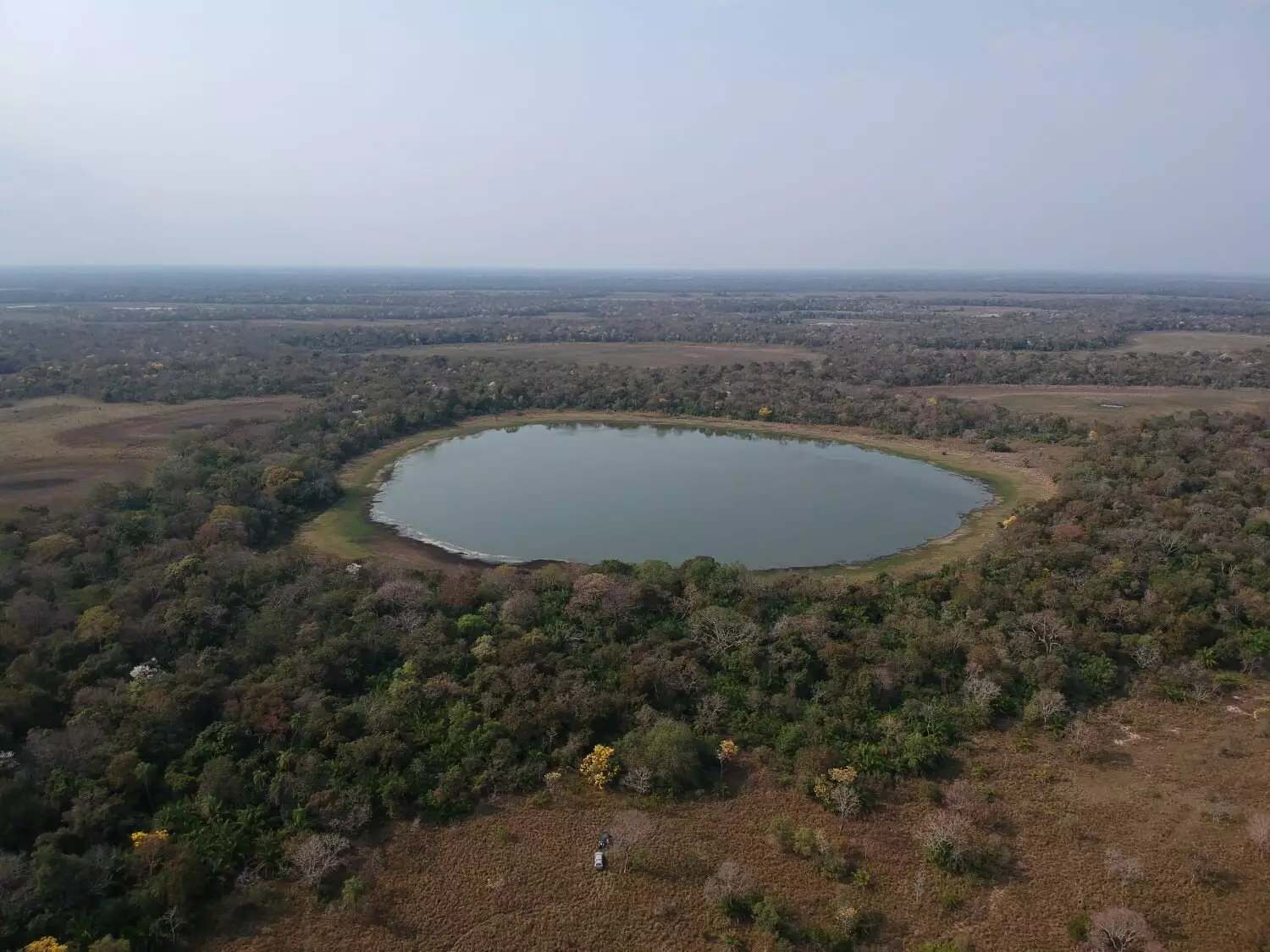The Pantanal, renowned as the largest tropical wetland on the planet, spans an impressive 153,000 km², predominantly in southwestern Brazil. However, its ecological complexity is often overshadowed by its freshwater counterparts. While soda lakes – which are characterized by their high salinity and pH levels hovering around 11 – are seemingly less significant from an environmental emission perspective, recent studies indicate that they may play an unexpected role in the global greenhouse gas cycle. Research from Brazilian institutions, particularly from the University of São Paulo (USP) and Federal University of São Carlos (UFSCar), has shed light on these often-overlooked ecosystems, emphasizing the pressing need for a deeper understanding of their biogeochemical dynamics.
One remarkable aspect of the Pantanal’s soda lakes is their seasonal variability, marked by distinct dry and wet phases. These fluctuations not only alter the physical landscape but also significantly affect the microbial communities that inhabit these lakes. The current research suggests that during drought conditions, emissions, particularly of methane, may rise due to decomposing organic matter and cyanobacterial blooms. The role of cyanobacteria is particularly intriguing as they thrive under adverse conditions, contributing to methane production through decomposition processes.
In contrast, during the rainy season, the dynamics shift. The lakes may exhibit varying emissions based on their specific classification – eutrophic turbid, oligotrophic turbid, and clear vegetated oligotrophic. The study revealed that eutrophic turbid lakes were the largest methane emitters, while oligotrophic lakes, with their high sulfate concentrations, showed negligible methane emissions but yielded carbon dioxide (CO2) and nitrous oxide (N2O). This classification underlines the complexity of the ecosystem, demonstrating that different chemical environments can lead to divergent microbial behavior and, consequently, greenhouse gas outputs.
The challenges faced by the Pantanal are accentuated by recent climatic shifts. The region has been witnessing extreme droughts and an alarming rise in wildfires, with 22,116 incidents recorded in 2020 alone. As climate change advances, these environmental stressors are expected to become more pronounced, which could dramatically alter the biogeochemistry of soda lakes. Satellite images reveal a concerning trend: shrinking water surfaces and a proliferation of cyanobacteria, suggesting a grim trajectory for the ecosystem if these conditions persist.
Research indicates that the interplay of these variables not only threatens the immediate biodiversity of the lakes but poses broader implications for carbon storage in the region. Wetlands, although occupying only a small fraction of the Earth’s surface, play a critical role in sequestering carbon. The unique microbial communities in the Pantanal’s soda lakes are central to this process, yet they are increasingly at risk as external pressures mount.
Microorganisms function as the backbone of the soda lake ecosystems, particularly in their role within nutrient cycling and maintaining ecological processes. The findings underscore the necessity of integrating microbial community dynamics into broader greenhouse gas emission models. Understanding these relationships will enable a more comprehensive analysis of how soda lakes in the Pantanal may respond to extreme weather events and ongoing climate shifts.
In a recent study reflecting on this dynamic, the researchers found that the behavior of bacterial communities varies significantly between the dry and wet seasons. Cyanobacteria possess the remarkable ability to adapt by absorbing CO2 during harsh conditions and fostering bacterial growth when circumstances improve. This adaptability highlights the resilience of microbial life, although it also raises questions about ecological balance and shifts in emission patterns.
Despite the wealth of information emerging from ongoing research, considerable gaps remain in our understanding of how soda lakes contribute to the overall greenhouse gas emissions of the Pantanal biome. The challenge lies in quantifying these emissions accurately and developing predictive models that account for ongoing climatic changes. Researchers are actively investigating methods to monitor these emissions more effectively, with a focus on discerning the reasons behind the shifts in cyanobacterial populations and how to mitigate potential hazards.
As climate change exacerbates the conditions in the Pantanal, it becomes increasingly vital to address the unique characteristics of soda lakes and the microbial life they harbor. Their role in greenhouse gas emissions is substantial, and neglecting to study them could result in significant underestimations in global carbon budgets. Future research will be crucial not only for understanding the current dynamics but also for informing conservation strategies to safeguard this unique environment and its vital contributions to global ecological health.


Leave a Reply